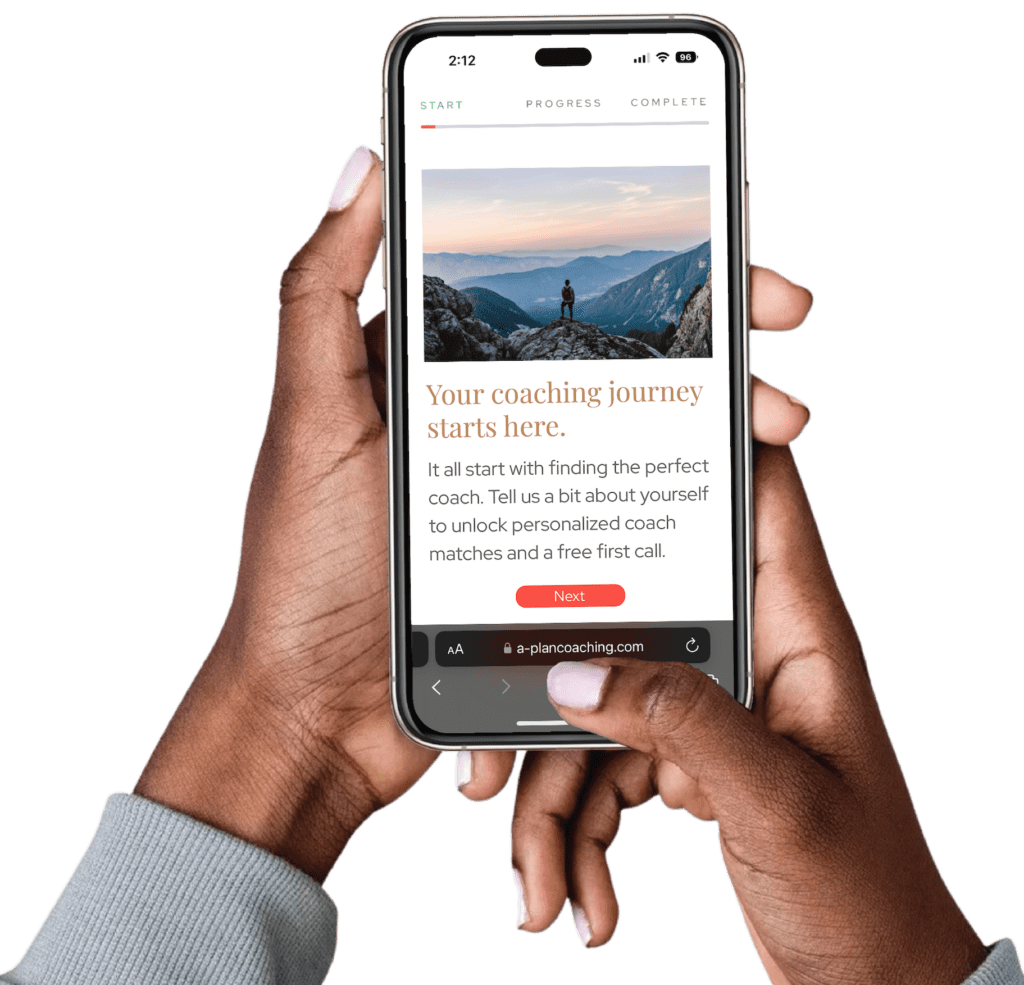Jump to section…

Running a small business is an exciting yet demanding journey that requires vision, adaptability, and resilience. Success often demands thinking outside the box, and that’s where small business coaching can make all the difference.
There are many benefits of coaching: 80% of people who receive coaching report increased self-confidence, and over 70% benefit from improved work performance, relationships, and more effective communication skills. Coaching can help uncover bold, creative solutions that drive growth and efficiency in unexpected ways. Below, we explore the transformative power of small business coaching, highlight its key benefits, and share 10 unconventional strategies that thriving business owners use to stay ahead.
What Is Small Business Coaching?
Small business coaching is a professional service designed to help entrepreneurs and business owners achieve their goals through customized support and guidance. Unlike business mentoring or consulting, small business coaching focuses on developing specific skills, creating actionable business plans, and addressing individual and team challenges. It offers a personalized touch, meeting each business’s unique needs.
Is Small Business Coaching Worth It?
For startups and small business owners, investing in small business coaching services often results in a powerful return on investment (ROI). Benefits include:
- Improved Leadership Skills – Learn how to inspire your team and manage your own business effectively.
- Clear Business Roadmaps – Create actionable plans aligned with your new business goals.
- Enhanced Team Performance – Boost employee engagement and collaboration.
- Better Resource Management – Streamline operations and improve cash flow.
Countless testimonials reveal how executive coaching has helped entrepreneurs improve their business skills, bottom lines, and work-life balances..

“Before I started working with a)plan, coaching seemed pretty “touchy-feely” and one of the pleasant surprises that I found is that it’s very rigorous and practical – and effective.”
— Nilay Oza, Oza Sabbeth Architects
Team Coaching vs. One-on-One Coaching
Small business coaching programs can involve either team sessions or individual coaching.
- Team coaching involves regular group coaching sessions addressing challenges like collaboration, leadership, diversity, equity, and inclusion (DEI). It’s an excellent choice for improving team dynamics and driving organizational change.
- On the other hand, one-on-one coaching focuses solely on the individual, whether it’s the business owner or a key team member. This approach is all about deep-dive personal development and goal alignment.
The most effective approach? A combination of both. Team coaching strengthens group cohesion, while one-on-one sessions provide deep personal insights, creating a holistic coaching experience. At a)plan, we use a combination of both to help our coaching clients thrive in their personal and professional lives.

Interested in Small Business Coaching Services?
10 Small Business Coaching Secrets
Now, let’s uncover 10 weird but powerful coaching strategies that have helped small businesses thrive. These unconventional tricks are backed by real-world examples and coaching success stories.
Trick #1: Use “reverse mentoring” for better team dynamics.
Flip the traditional mentorship model on its head. Encourage newer or younger employees to coach leaders. This fosters fresh perspectives, new business experiences, and innovations.
Example: A mid-sized tech company implemented reverse mentoring by pairing junior developers with department heads. The younger employees shared insights on emerging technologies and user trends, which helped the company revamp its product offerings and attract a younger customer base.
Trick #2: Implement “no-meeting Fridays.”
Dedicate one day a week to focus on work without interruptions. This gives employees time to tackle complex projects and improve productivity.
Example: When a marketing firm introduced “no-meeting Fridays,” employees reported feeling less stressed and more creative, leading to higher-quality campaigns and improved client retention rates.
Trick #3: Conduct team coaching for diversity, equity, and inclusion (DEI) initiatives.
Team coaching sessions dedicated to DEI can dramatically improve organizational culture and team cohesion.
Example: A small e-commerce company facing communication silos between departments incorporated monthly DEI coaching. These in-person sessions revealed key barriers and improved cross-department empathy, which increased team collaboration and productivity.
Trick #4: Participate in group brainstorming, but use silent post-its.
Give introverts a platform by asking everyone to write their ideas on sticky notes before sharing. It minimizes groupthink and boosts idea generation.
Example: A boutique design studio used this method during a project kickoff to generate ideas for a high-profile client. The silent brainstorming session produced a winning concept that secured a long-term partnership with a client.
Trick #5: Focus on “micro-goals” in action plans.
Break big-picture objectives into smaller, actionable steps. This approach keeps teams motivated and consistent.
Example: An accounting firm handling seasonal tax returns set daily micro-goals for filing preparation. This improved task accuracy and reduced workloads during crunch periods, increasing client satisfaction scores.
Trick #6: Ask employees to craft their “ideal workday” as a coaching tool.
During coaching sessions, ask team members to describe a perfect day. Aligning workloads with employee preferences leads to happier, more productive teams.
Example: A retail startup discovered that many employees preferred flexible schedules. Implementing optional work-from-home Mondays increased overall productivity, and voluntary turnover dropped.
Trick #7: Use storytelling to boost sales strategy.
Teach your team how to incorporate storytelling into sales pitches. This helps customers connect emotionally with your brand, driving better results.
Example: A regional travel agency trained salespeople to craft personal stories about their trips. By shifting away from data-heavy pitches, the agency saw an increase in bookings.
Trick #8: Schedule “gratitude coaching” moments in team sessions.
Integrate moments of gratitude into daily or weekly coaching practices. It builds a positive workplace culture and improves morale.
Example: A social media agency began sharing weekly “gratitude highlights” in team meetings. Employees felt more valued, leading to a measurable increase in workplace satisfaction and better team collaboration.
Trick #9: Encourage non-linear thinking for problem-solving during coaching sessions.
Step outside traditional frameworks and encourage creative problem-solving. Use exercises that challenge team members to suggest out-of-the-box solutions.
Example: A local bakery dealing with delivery challenges invited employees to suggest non-traditional solutions during a coaching workshop. One employee devised a solution using community partnerships, which reduced delivery times and garnered positive press for the business.
Trick #10: Introduce themes to monthly business coaching sessions.
Devote each month to a specific growth area like “Customer Experience” or “Wellness at Work.” These small coaching modules drive targeted improvements.
Example: A media company focused on leadership training for one month. They introduced workshops on effective delegation, which resulted in faster project turnarounds and helped promote three junior managers to leadership roles.
Implementing Coaching for Maximum Impact
Implementing small business coaching requires planning and strategy. Here are some tips to integrate it effectively.
- Combine Team and One-on-One Coaching: Choose a hybrid coaching program that leverages individual growth and team alignment for maximum results.
- Focus on DEI as a Central Theme: DEI isn’t just a buzzword—it’s a competitive advantage. Make sure diversity and inclusion is a priority during coaching sessions.
- Track Goals with Metrics: Use metrics to measure progress. A clear roadmap ensures accountability and demonstrates tangible business growth.
- Leverage Scalable Coaching Models: Platforms like a)plan make it easier for startups and small businesses to afford coaching services tailored to their business needs.
- Foster an Ongoing Culture of Growth: Coaching isn’t a one-time event. Regularly scheduled sessions ensure long-term improvement in leadership skills and business operations.
Get Started with Small Business Coaching
Successful business ownership requires more than hard work—it demands innovation, growth, and resilience. The 10 coaching tricks we’ve covered can help you unlock new opportunities for business success. Start small by implementing just one or two strategies, and observe the immediate results in your business development and employee performance.
Whether you’re starting out on the entrepreneurship journey or you’re ready to bring your business to the next level, professional coaching can help. With tailored action plans, expert guidance, and proven methodologies, small business coaching services, like those offered by a)plan, provide the tools you need for success.

Interested in Small Business Coaching Services?
